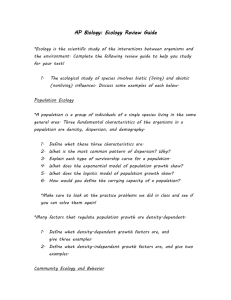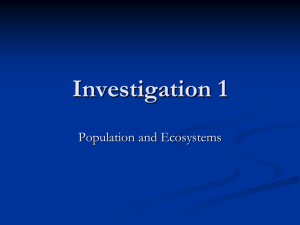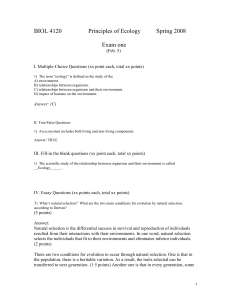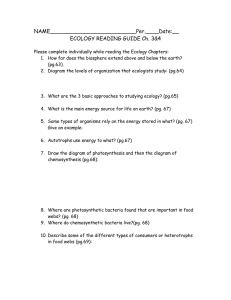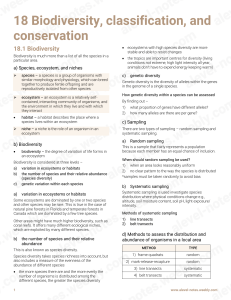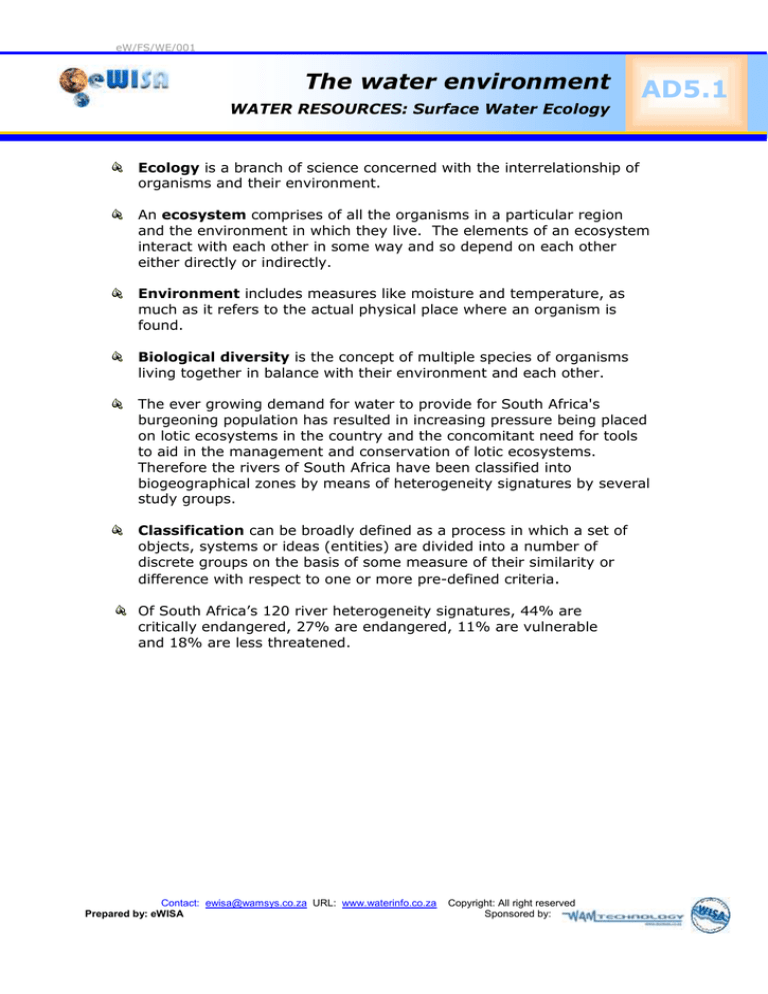
eW/FS/WE/001
The water environment
WATER RESOURCES: Surface Water Ecology
AD5.1
Ecology is a branch of science concerned with the interrelationship of
organisms and their environment.
An ecosystem comprises of all the organisms in a particular region
and the environment in which they live. The elements of an ecosystem
interact with each other in some way and so depend on each other
either directly or indirectly.
Environment includes measures like moisture and temperature, as
much as it refers to the actual physical place where an organism is
found.
Biological diversity is the concept of multiple species of organisms
living together in balance with their environment and each other.
The ever growing demand for water to provide for South Africa's
burgeoning population has resulted in increasing pressure being placed
on lotic ecosystems in the country and the concomitant need for tools
to aid in the management and conservation of lotic ecosystems.
Therefore the rivers of South Africa have been classified into
biogeographical zones by means of heterogeneity signatures by several
study groups.
Classification can be broadly defined as a process in which a set of
objects, systems or ideas (entities) are divided into a number of
discrete groups on the basis of some measure of their similarity or
difference with respect to one or more pre-defined criteria.
Of South Africa’s 120 river heterogeneity signatures, 44% are
critically endangered, 27% are endangered, 11% are vulnerable
and 18% are less threatened.
Contact: ewisa@wamsys.co.za URL: www.waterinfo.co.za
Prepared by: eWISA
Copyright: All right reserved
Sponsored by:

